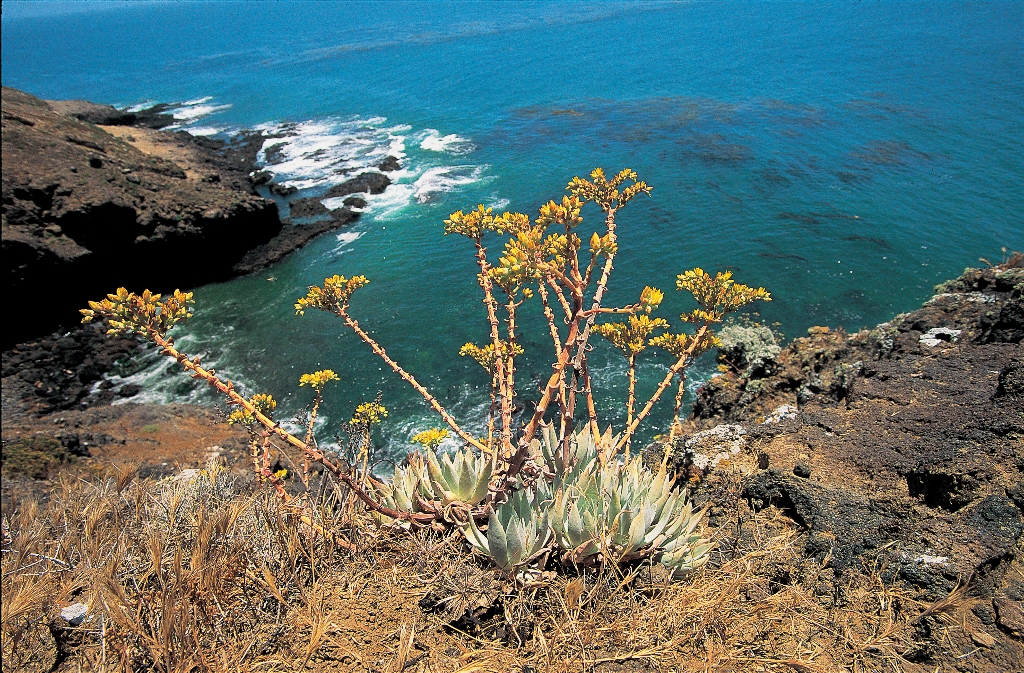
Island Plant Adaptations Guide Stop 7
The plants habitats found in many regions of the Channel Islands present a number of environmental challenges. South-facing slopes are hot and dry, and receive seasonal rainfall only during the winter and early spring months. In many locations soils are thin and rocky, and have little covering of leaf mulch to hold moisture or provide nutrients.
Plants found on the Channel Islands have responded to these environmental challenges through adaptations. For example, the light-colored leaves of coastal sagebrush reflect more sunlight than darker leaves, thereby helping to control plant temperature. Sagebrush also sheds many of its leaves in the dry season, which conserves even more water. A waxy coating on the leaves of the sage plant controls evaporation, and their curled edges protect the delicate undersurface.
Other island plants have evolved different strategies for dealing with dry conditions. The vine-like wild cucumber has immense underground tubers that store water and nutrients. Cacti such as coastal cholla and coastal prickly pear have spines in the place of leaves. The spines reflect sun and win, thereby protecting the plants from dehydration. These cacti have also evolved shallow root systems that spread over a wide area to take maximum advantage of the limited rainfall on the islands. Coastal boxthorn has also adapted to the hot, dry environment by developing small, specialized leaves to conserve moisture and reduce heat.
Perhaps no plant is more versatile in adapting to different habitats than dudleya, also known as live-forever. Dudleya commonly grows on dry, rocky outcroppings; however, it can also be found on stabilized sand dunes, grasslands, and scrub habitats in conditions varying from full sun to shade. This adaptability is reflected in the variety of dudleyas found on the Channel Islands, which include Santa Rosa Island live-forever and Santa Barbara Island live-forever.
Approximately 22 percent of the native plants growing on California's Channel Islands are endemic to one or more of the islands. This endemism results from tens of thousands of years of isolation; during this period of isolation genetic factors and environmental change have produced new plant species unique to the islands.
Because of their highly specialized nature, populations of endemic plants are generally small. Endemic plants are also vulnerable to competition from hardier introduced species such as nonnative grasses. These introduced plants can grow and reproduce rapidly, thereby competing with native plants for limited soil and moisture. Native plants are also vulnerable to competition from humans. Today there is great pressure to develop wild land; such development inevitably destroys the integrity of the habitat and severely impacts native species.
Is there something we missed for this itinerary?
Itineraries across USA


















































